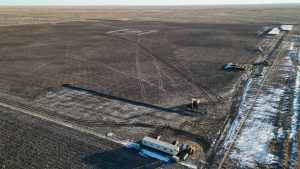The Christian Labour Association of Canada (CLAC) and B.C. government officials opened a new virtual classroom system last week designed to bring high tech jobs training to remote areas and First Nations in the province.
"The system is a model for how training can be delivered to remote communities," said David Prentice, CLAC B.C. Director.
"Our training centre will now offer a direct link to instructors at Thompson Rivers University and to remote jobsites and communities around the province. These new initiatives will provide bright new opportunities for First Nations, rural and remote communities across the province."
Ray Bruce, in charge of government relations and membership development at CLAC, explained that the Virtual Classroom Training System (VCTS) allows CLAC to take an instructor from a post-secondary training centre anywhere in province and broadcast them through its Langley office to up to 15 different locations.
The classroom is a combination of a GO TO Meeting, Skype and online learning with recording capabilities.
"We can take four from Prince George, four from Kitimat, four from Kelowna and put them together for a class of 12 which is much more cost effective," said Bruce. Thompson Rivers University is using the tool to teach construction craft worker skills to Haisla First Nations students at a Chevron LNG site in Kitimat.
Ledcor is a partner on this project.
Bruce said the goal of the pilot program is to help build more partnerships.
"We hope to see this expand to where this classroom is functioning on a regular basis to deliver training programs," he said.
According to Bruce, the technology was developed over the past couple years and the last nine months have been spent fine tuning it.
One of the major technical challenges was getting enough bandwidth to support it.
"We’ve been working out the bugs, fine tuning the technology so there’s a seamless ability to communicate from learner to instructor without prolonged delays or breakdowns," he said.
Amrik Virk, Minister of Advanced Education, explained that the theory components of many trades can very easily be taught using this technology.
A similar model with a different level of technology is used for medical education across the province.
"With B.C.’s Blueprint, we are looking at new innovative ways to deliver trades training," said the minister.
"By 2022, there will be one million job openings in B.C., and CLAC’s new Virtual Classroom Training System is a great example of how workers can fill those openings while getting the training they need."
One of the goals of the technology is to bring training to remote communities, especially First Nations.
John Amos, training co-ordinator from the Haisla Nation’s Haisla Business Operations said First Nations have struggled to get the training needed to enter the trades.
"The new training system that CLAC and Ledcor have launched today will make it easier for Haisla Nation members to receive the apprenticeship training they need and want in or near their own community," he said.
To facilitate work schedules, the curriculum through the VCTS will be delivered in two to two-and-a-half-hour segments to allow apprentices to participate in the courses and still work regular shifts as needed.
"There is a huge skills gap and we know that, and these big LNG mega projects are putting a lot of pressure on all of us to do our part, and this is just CLAC doing its bit. We are not the whole solution but we’re one of the pieces of the puzzle," Prentice said.











Recent Comments
comments for this post are closed